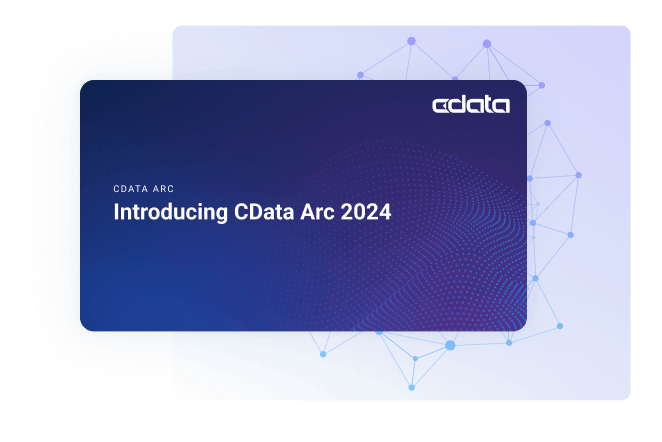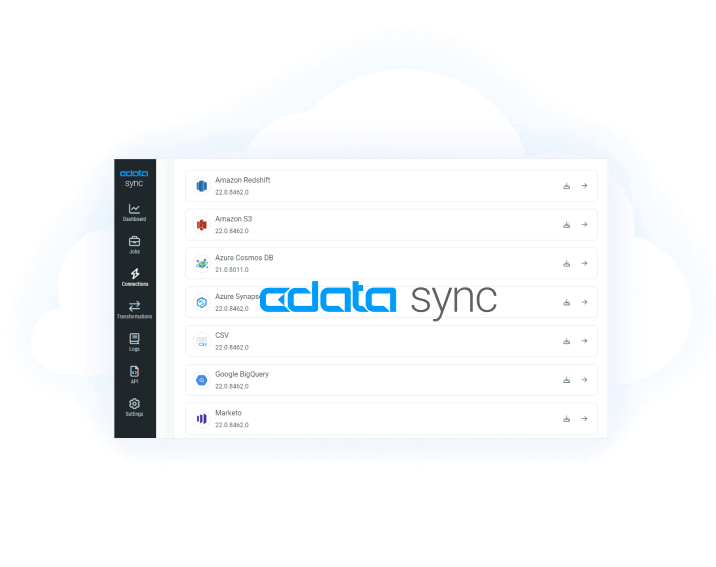Discover how a bimodal integration strategy can address the major data management challenges facing your organization today.
Get the Report →CData Software - Knowledge Base
Latest Articles
- Replicate Data from Multiple Files in an Amazon S3 Bucket Using CData Sync
- Replicate Data from Multiple Local Files Using CData Sync
- Driver Guide: Marketing Analytics Predefined Reports
- Displaying Data from Related Tables Using Angular with Connect Server
- Deploying CData Sync in a Kubernetes Environment
- Excel Add-In Getting Started Guide
Latest KB Entries
- Jetty Security Notice Overview
- Upsert Salesforce Data Using External Id in SSIS
- NuGet Repository Overview
- SAP Drivers Overview
- Embedded Web Server (.NET) - Potential Medium Security Vulnerability
- Configuring Incremental Replication in CData Sync
ODBC Drivers
- [ article ] Analyze Data in MicroStrategy Using the CData ODBC ...
- [ article ] Create Dynamics NAV Data Visualizations in Power ...
- [ article ] Analyze Salesforce Data with PowerPivot
- [ article ] A Comparison of Drivers for Azure Cosmos DB
JDBC Drivers
- [ article ] Access SAP Tables and SAP Queries using CData SAP ...
- [ article ] Use the CData JDBC Drivers to Create New Data ...
- [ article ] A Comparison of JDBC Drivers for MySQL
- [ article ] A Comparison of JDBC & ODBC Drivers for Amazon ...
SSIS Components
- [ kb ] How to Replicate Data Between MySQL and SQL Server ...
- [ article ] Create CRM Accounts from QuickBooks Customers
- [ kb ] Upsert Salesforce Data Using External Id in SSIS
- [ article ] Perform API Operations Using Stored Procedures in ...
ADO.NET Providers
- [ article ] Accessing QuickBooks with Entity Framework 6
- [ article ] Using SQL to Query Gmail
- [ article ] Visualize your Salesforce Data in Tibco Spotfire
- [ article ] Connect to Nonstandard OData Services
BizTalk Adapters
- [ article ] How to Generate SQL Command Schemas for the CData ...
- [ article ] Standards-Based Access to NoSQL Data Sources
- [ article ] How to Generate Updategrams with the CData BizTalk ...
- [ article ] Configuring a Receive Location for the CData ...
Excel Add-Ins
- [ kb ] Connect/Disconnect the QuickBooks Online Products
- [ article ] Working with Redis Data in Microsoft Excel and ...
- [ article ] Bill an Invoice with the CData Excel Add-In for ...
- [ article ] Import Salesforce Data into Microsoft Power Query
API Server
- [ article ] Editing API Driver API Profiles
- [ article ] Connect to Dynamics NAV with the CData OData ...
- [ article ] Deploying CData Sync in a Kubernetes Environment
- [ article ] Launch the API Server AMI on Amazon Web Services
Data Sync
- [ article ] Get Started with CData Sync for Marketo
- [ article ] Start with CData Sync Part 2: Customizing ...
- [ article ] Configuring Oracle Autonomous Database as a CData ...
- [ article ] Launch the CData Sync AMI on Amazon Web Services
Windows PowerShell
- [ article ] Reconciling Authorize.net Transactions with ...
- [ article ] PowerShell Cmdlets Getting Started Guide
- [ article ] Import QuickBooks Online Data to QuickBooks ...
- [ article ] Query Google Calendars, Contacts, and Documents ...






